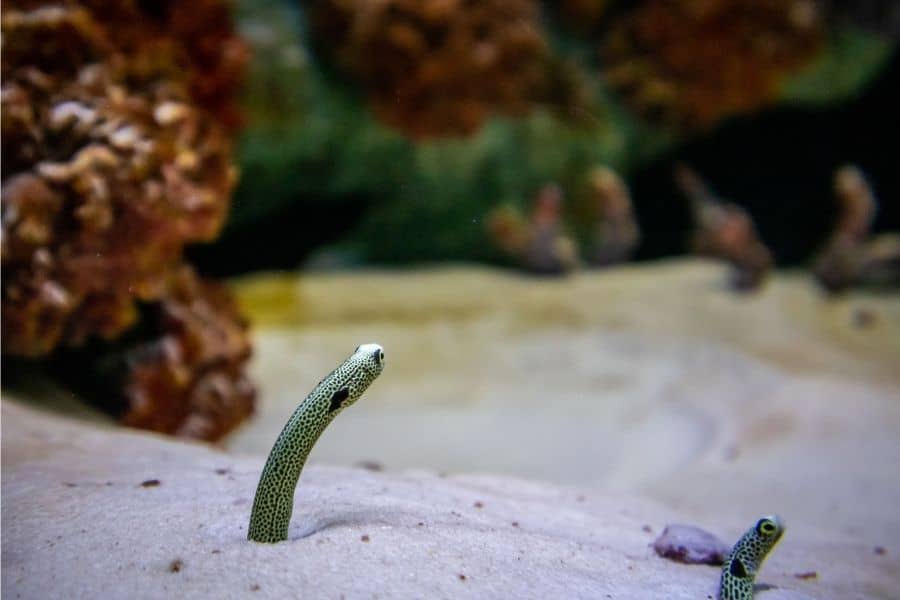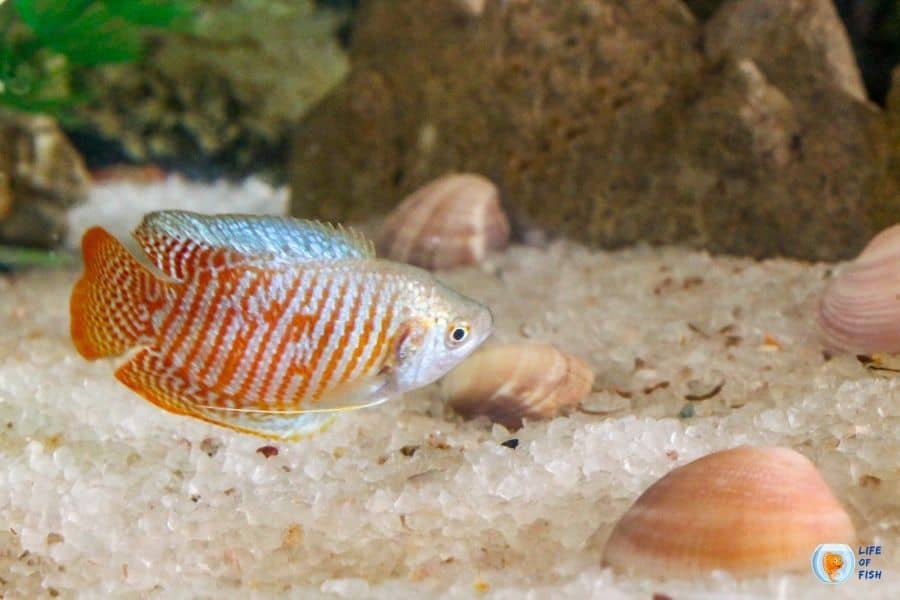Sand is a popular substrate choice for many aquariums. It has a natural look and feels that can be very aesthetically pleasing. It can also provide a good home for burrowing fish and invertebrates. There are, however, some potential downsides to using sand in your aquarium. Here are Pros And Cons Of Sand In Aquarium.

Pros Of Sand In Aquarium
Jump To
Sand provides a natural look to the aquarium.
One of the big advantages of sand is that it provides a very natural look to your aquarium. If you want to build a natural-looking aquascape, this might be a huge selling point.
Sand has a good selection of colors.
Sand has a good selection of colors and shades to choose from. You can find white, black, brown, tan, pink, blue, green, and more sand colors. This gives you several options to create the perfect look for your aquarium.
Cost-Effective
Another significant advantage of sand is that it is very cost-effective. A bag of sand will usually be much cheaper than other types of aquarium substrates. This can be a big benefit if you are on a budget.
Easy To Clean
Since sand has fine particles, they hold together tightly so that the food particles and debris fall into the spaces between the sand grains and settle on the bottom of the aquarium. This makes it very easy to clean your aquarium and keep the water quality high.
Doesn’t Alter The Water Chemistry
As sand is a natural, inert substance, it doesn’t alter the water chemistry in your aquarium. This is unlike other substrates such as gravel, which can slowly release minerals into the water over time, altering the pH and hardness.
Ideal For Bottom-Dwelling Fish
Bottom-dwelling fish are known to forage the substrate for food. Therefore, they require a soft substrate that they can easily sift through. Sand is an ideal substrate for these fish as it meets all of their requirements.

Cons Of Sand In Aquarium
Can Be Messy
The sand can be very messy if your aquarium is not set up correctly. Sand can easily be stirred up by fish which can cause the water to become cloudy.
It can Be Difficult To Set Up.
Another big disadvantage of sand is that it can be difficult to set up. If you are not careful, you can easily end up with a big mess. It is essential to rinse the sand before adding it to your aquarium carefully.
It can Be Difficult To Vacuum.
Since sand is very fine, it can be difficult to vacuum. The sand can easily get stuck in the vacuum head and clog it up. This can be frustrating and time-consuming.
Can Potentially Damage The Equipment
Since sand is very fine, it can potentially damage your aquarium equipment if it gets into the wrong places. For example, sand can easily clog up filters and pumps. Be careful when using sand and ensure that it doesn’t get into any of the moving parts of your aquarium.
It is possible to form anaerobic air pockets.
If the sand is too deep, anaerobic air pockets can form. These anaerobic air pockets can be harmful to your fish and can cause problems with the water quality. To avoid this, ensure the sand is no deeper than 2-3 inches.
It Doesn’t Have Any Nutrients.
Since sand is inert, it doesn’t have any nutrients. This means you will need to supplement the aquarium with fertilizers if you want to grow plants. If you want to construct a natural-looking planted aquarium, this can be a huge drawback.
Floats easily in the water column
Another potential downside of sand is that it floats easily in the water column. This can be a problem if you have fish that like to dig in the substrate. The sand can quickly get into their gills and cause problems. To avoid this, ensure that the sand is firmly packed down and that there are no loose pieces.
Fish Can uproot Plants Easily.
Since sand is very fine, plants can not spread out their roots very well. This makes it difficult for them to take up nutrients, and fish can easily uproot them. If you want to grow aquatic plants in your aquarium, choosing plants that don’t need a lot of root space is important.
Can Be Difficult To Change The Aquascape
Once the sand is in the aquarium, changing the aquascape can be very difficult. This is because the sand will move around easily, making it difficult to get it into the desired shape. If you want to change the aquascape, it is best to do it before adding the sand.

Which Is Better, Sand Or Gravel For A Fish Tank?
There is no right or wrong answer to this question. There are both Pros And Cons Of Sand In the Aquarium. It heavily depends on your preference and what you are looking for in an aquarium. If you want a natural-looking aquarium, then sand is the better choice. However, gravel is the better choice if you are looking for an easy-to-maintain aquarium.
If you want to grow plants in your aquarium, then gravel is the better choice. This is because plants need a lot of root space and can’t spread out their roots very well in sand. If your fish enjoy digging in the substrate, gravel is a better option. This is because the gravel will not float up into their gills like sand can. Overall, both sand and gravel have advantages and disadvantages. It all heavily depends on your tastes and what you want from an aquarium.
Conclusion
As you can see, there are Pros And Cons Of Sand In the Aquarium. Before selecting whether sand is best for you, you must balance the pros and cons. If you are looking for an easy-to-care-for substrate that doesn’t require much maintenance, sand might be a good option. However, gravel might be a better choice if you are looking for a natural-looking substrate that is easy to change. Whatever substrate you choose, check the compatibility of the substrate with your fish first, as some fish might prefer one over the other.
Read Next : Can Fish Tanks Be In Direct Sunlight? (Pros and Cons)
